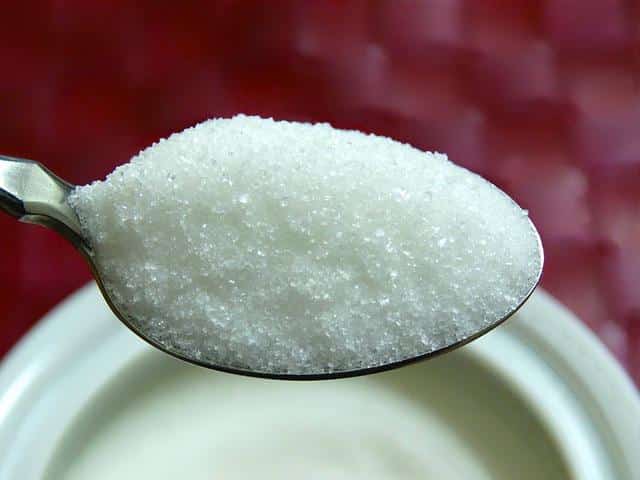How many times have you run out of sugar in the middle of baking something? Now, what if I told you that you could make and process your own sugar, right at home?
Let’s examine two ways you can make your own sugar – with sugar cane or with sugar beets. (If you live in a non-tropical climate, then skip down to sugar beets.)
Sugar Cane
This bamboo-like plant thrives in warm, almost tropical environments and can grow to 12-feet tall given the right circumstances. It takes up to eight months to mature to the point where you can extract sugar juice, unless you happen to live in a tropical or sub-tropical region or reside in southern Louisiana, Florida or Hawaii. The growth of sugar cane in those regions is year-round due to the constant warmth and humidity.
‘Miracle Oil Maker’ Lets You Make Fresh Nut Oils Within Minutes!
Sugar cane is grown by separating sections of the bamboo-like stem, cutting between the joints. The easiest way to sprout your sugarcane is by simply taking your cut stem section and wrapping it in either newspaper or even magazine pages (preferably low-gloss paper, as the chemicals can affect your growth), soaking the wrap in warm water, and putting the bundle into a plastic bag. Then, let it sit in a corner of your home for a month until it begins to sprout. Once it’s sprouted, plant in compost-rich soil at the beginning of your local growth season and wait for the harvest. At maturity, cut the cane above the base joint and crush the cane thoroughly to extract as much of the juice from it as possible, using, for example, a heavy duty rolling pin.
Story continues below video
This is where the real work begins, because now you have to process and strain the juices. Take a large saucepan and carefully strain the juices through a cheesecloth or cloth with similar characteristics. Set your stove to medium-high and adjust as needed to keep a low boil. Stir the mixture every four minutes until it reaches the consistency of syrup. Make sure not to cook for too long, as the mixture will turn dark brown. (This would leave you with nothing but molasses.) Take a palm’s worth of sugar and toss it into the mixture, stirring it in gently. Once you’ve folded the syrupy mixture over it a few times and are positive there isn’t any floating on the top, then the fun part starts. (For those of you who aren’t familiar with the process of making rock candy, pay attention.)
Take a long wooden spoon or even a stick, as long as it reaches from one side of the pot to the other without risk of it slipping in. Next, take a good thick thread or string and tie it in the middle of your spoon or stick. Use a small spoon to push the end of the string into the mixture if needed. Come back in a few hours after it is cooled, and crystals will have begun to form on your string. If you see crystals, then simply leave the string to gather until the next morning. What you will be left with is a pot full of molasses and a large sugar crystal matrix attached to your string. After washing your sugar crystal off with cold water, simply allow it to dry in the sun where the bugs can’t get to it and then very gently crush the crystal down to the consistency of sugar.
Sugar Beets
For those of you who don’t live in a tropical climate and simply want an easy way to make your own sweetener, then you’re in for a surprise. Let me introduce you to the sugar beet, which can be grown in colder climates. Now, you may be thinking of those tart red slices that your parents wanted you to eat at Thanksgiving when you were younger; don’t worry, because these are simply close relatives to the beets that you know. Sugar beets can be grown in a variety of different regions. Originating from Europe, this tasty beet was not mass produced for sugar until 1801 and didn’t reach popularity in America until 1836.
Story continues below video
The sugar produced from beets has more of a rose color to it. The sugar beet takes about 80 days to grow to maturity before it is ready to process. After cleaning your beets thoroughly and cutting off the greens from the top, you need only to grind the beets down to julienne size to allow as much surface area as possible. Place your beets in a large pot of boiling water and boil until the beets have become mushy — but not too long as it will be harder to strain if you allow it to soften too much. Drain the sugar water from your beets using a colander; the sugar water will need further boiling until it reaches a syrupy texture. Set this on a countertop to dry and harden. Use a scraper to remove the dried sugar beet crystals, and grind down with a spoon or blender until it’s to the consistency that you need.
Congratulations! You are one step closer to being fully self-sufficient. Now, let’s make some sweet tea, shall we?
Have you ever made your own sugar? What advice would you add? Share it in the section below:
Harness The Power Of Nature’s Most Remarkable Healer: Vinegar
 Off The Grid News Better Ideas For Off The Grid Living
Off The Grid News Better Ideas For Off The Grid Living




